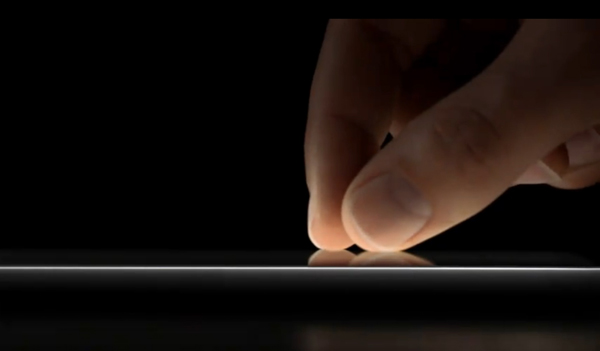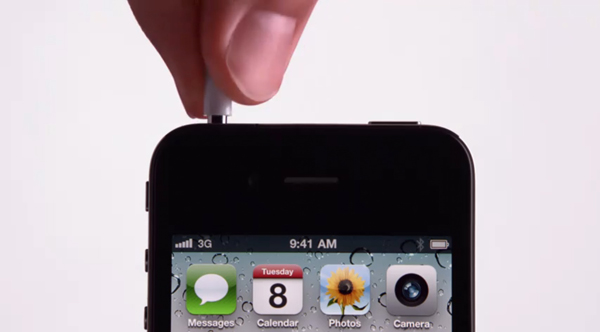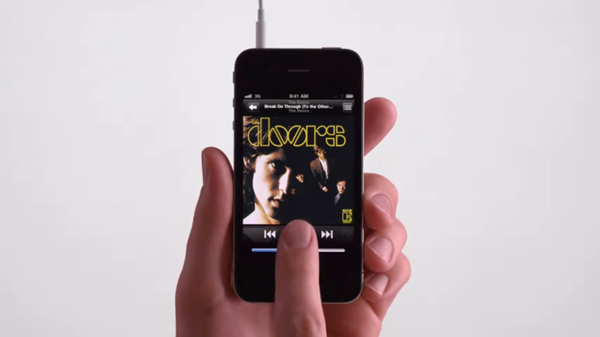|
SEMIOTICS the signs as individuals |
  |
The main signs of the advertisements are very blatantly apparent due to the simplistic nature of the ads. Clearly the product is always the most salient sign of the ads, and it is almost always perfectly centered. The product can be moved sideways or angled in a way that only lets you see its profile. It can be moving quickly or be held completely still. The product serves as a platform to show the viewer the world within the world of the advertisement. The product presents to the reader all that they "need." The product is an icon, and as a sign it signifies to the reader the concept of ease by presenting the ability to conquer many tasks within the limits of their hands and by the use of their fingertips. As Jenkins says, "advertisers employ icons to advance transcendent and spiritual claims about their products while avoiding perceptions of a blasphemous materialism." (474) | |||||||||||||||||



| What lies within the product, can serve as a separate sign on its own. The screen of the product will be that sign. The screen signifies many things, such as simplicity, easiness, effortlessness, intelligence, and freedom. It presents the concept of having "the whole world at your fingers" as is stated in one of the many iPad advertisements. What world is at your fingers, you ask? YOUR world. Whatever world you want. If you want movies, books, games, or any other sort of entertainment, it is there. Most importantly though, your real life is there. Do you need emails? You've got them. Do you need to speak to a client? Done. Do you need to say hello to your two-year-old child who you haven't seen for a week? You can do exactly that, and you have the ability to see them at the same time. You have control of your world, and this reifies the idea of the "i" that Apple uses in the name of their products. The iPhone, the iPad, the iPod, etc. all serve as products that are meant to make your world easier. Even if they do not, they are advertised in a way that makes them appear as though they will. What happens on their screens impacts your world. What is on the screen can often be extended into the rest of the world as well. This is evident through objects that serve as signs, such as the headphone jack that is presented in some of the iPhone4 ads that are focused on the musical capabilities of the product. The headphone jack and cord do not have an end that can be seen on the screen, but they instead go beyond the framing of the screen, therefore speaking to the viewer the power that your world in the screen has to actually reach out into your REAL world. | 
|
This ease and effortlessness that is presented on the screen is activated by the hands that are in control. The hands of the product user are another sign that is always within the ad. These hands have an implied race and an implied gender. They serve as a placeholder for the viewer, because with the hands already on the product, there is no room for the viewer. Therefore the viewer is only a spectator, and is positioned as an outsider. They are not a part of the Apple world yet, but they can peer in and see how spectacular and easy it really is. The hands are dominantly implying the product user to be a Caucasian person, and are fairly evenly dispersed between the implied genders of male and female. Occasionally the race may differ. The consistency of the Caucasian hands differs from the race of the people that actually appear within the screen of the product. This is an issue to be discussed within the realm of discourse analysis, but an important issue to keep in mind when thinking about what the predominant signs are within the advertisements and how they are presented to interpellate the most consumers. These hands are signifiers for the signified concept of incapability and the difference between product owners and non-owners. The hands establish an evident distance between an owner and the target audience of non-owners, yet the fact that there are only hands as opposed to an entire body, still allows the viewer to relate to the product user and see the possibility of being in their shoes. Being in their shoes allows the viewer to imagine changing their world, and "if the point is to change the world, then seeing from the perspective of those engaged in practice seems crucial" (Jenkins, 483). Elin and Lapides state that it is "important to determine and examine the target audience and use that knowledge in the creation of the concept and theme", so through these tactics, the advertisements have maintained their ability to communicate the preferred meaning (Elin and Lapides, 3). | |||||||||||||||||






